SUMMARY
VENOM: None
PREVALENCE: Very common
ACTIVE PERIOD: Active mostly at night
KEY ID FEATURES: Black in appearance with slight purple hue, appears similar to a dark earth worm
BEHAVIOR: Lives in soil, under logs and in leaf litter, adults will musk and poke with tail spike when handled
SIZE: Very Small - +/- 15cm
IUCN: NE - Not Evaluated
OTHER: Often mistaken for earth worms
QUICK ASSESSMENT 0-10
GALLERY
IMPORTANT: Many snakes have significant variance in coloration and pattern even within the same species. There can also be extreme differences in appearance from juveniles to adults so it is important to never assume you have properly identified a snake.
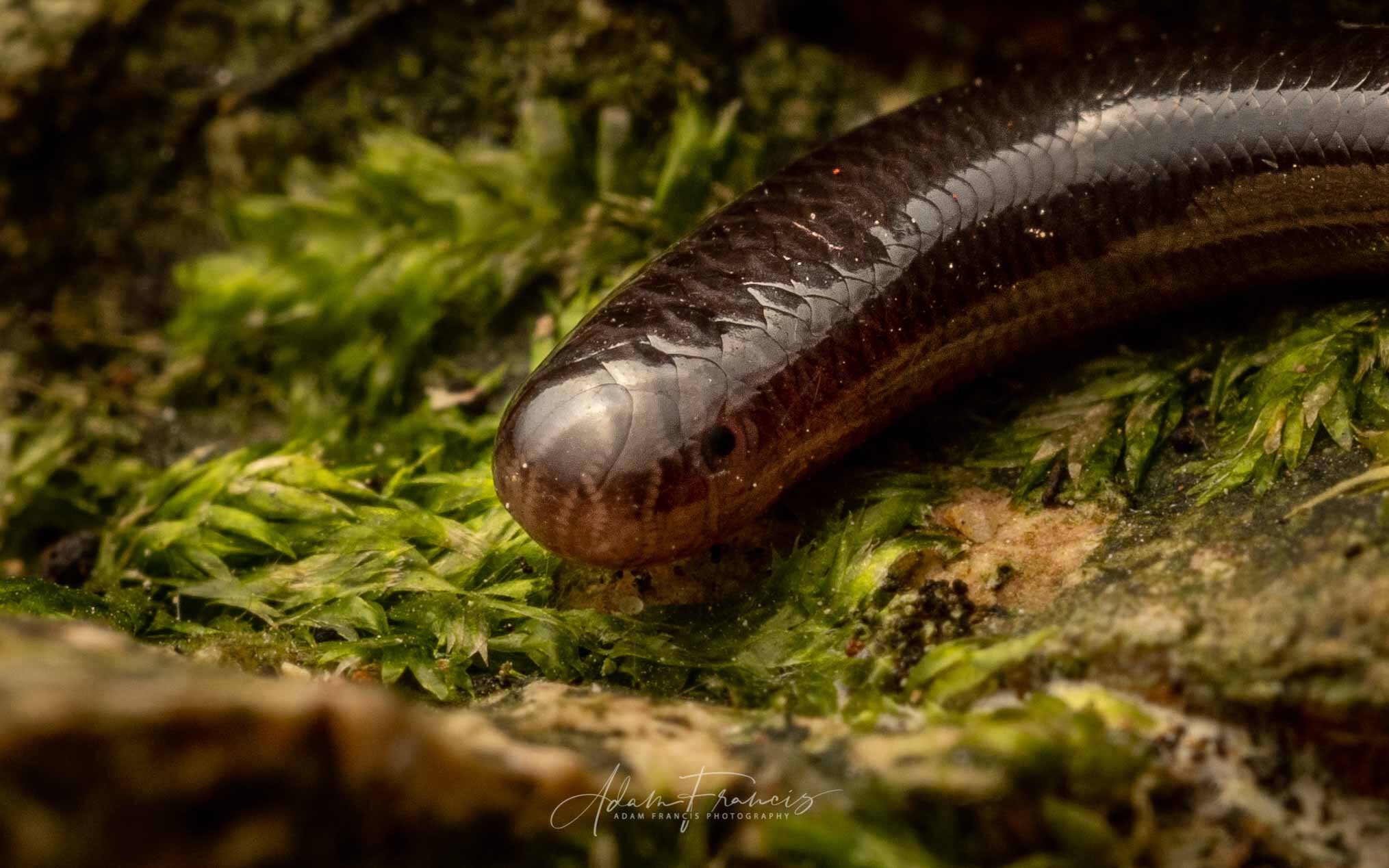
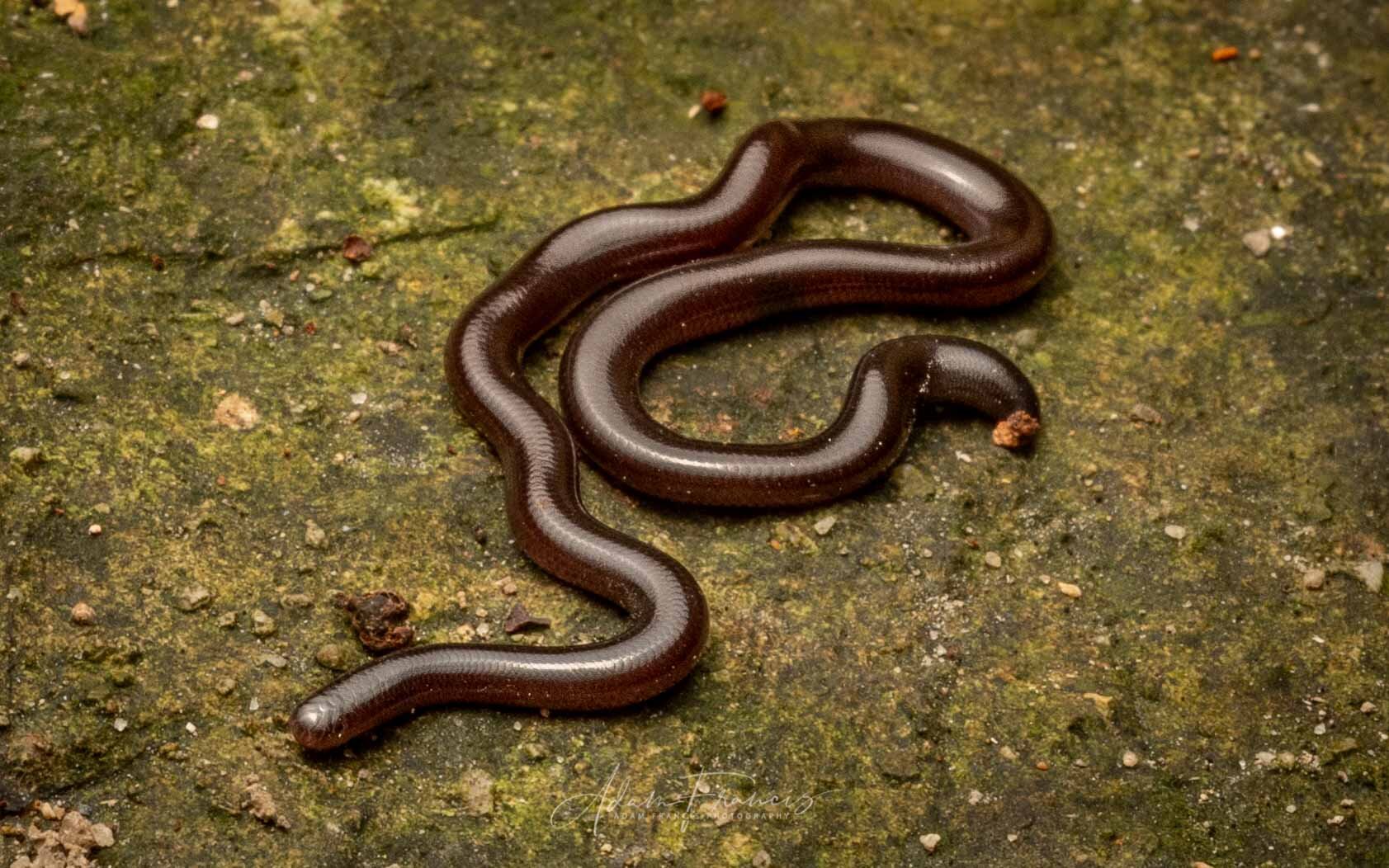
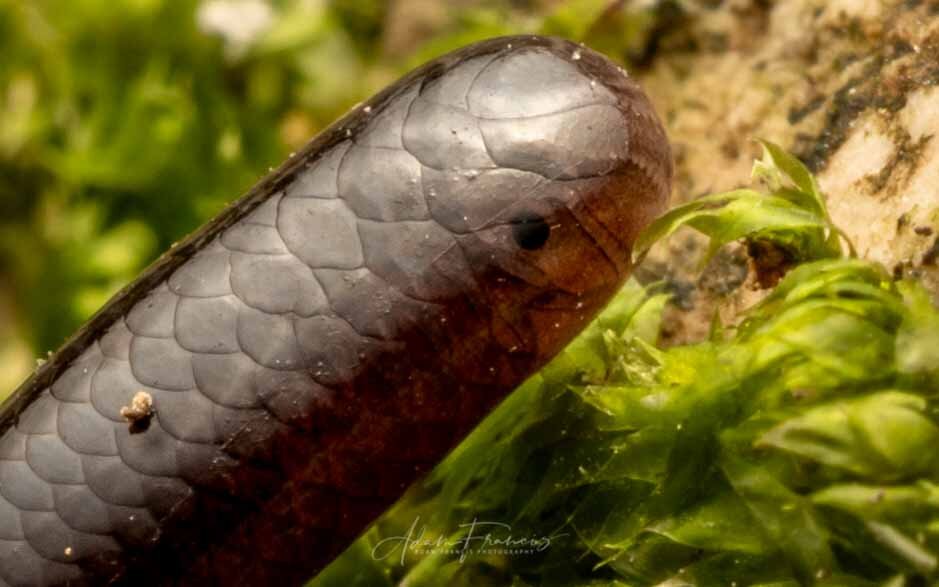
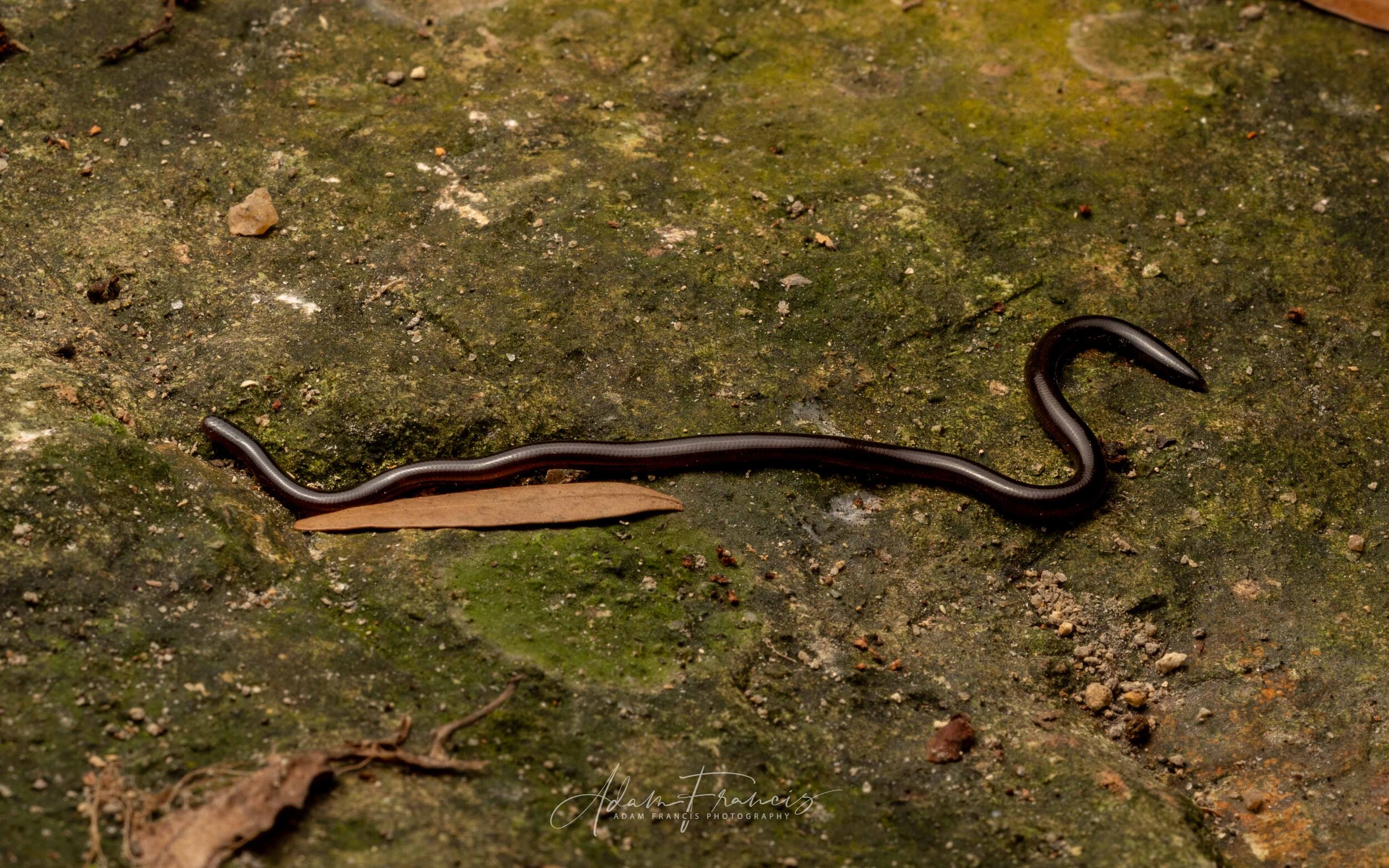
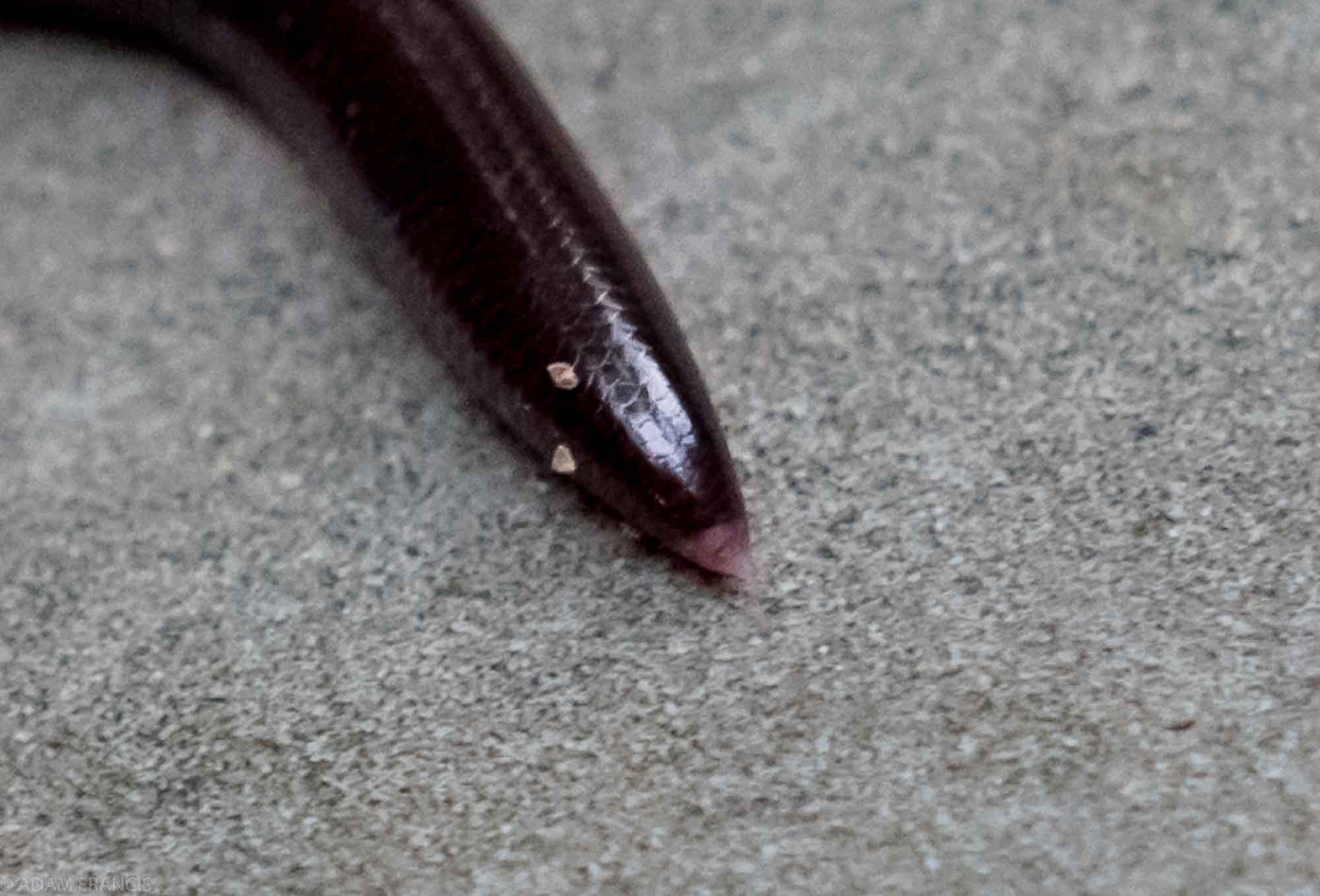
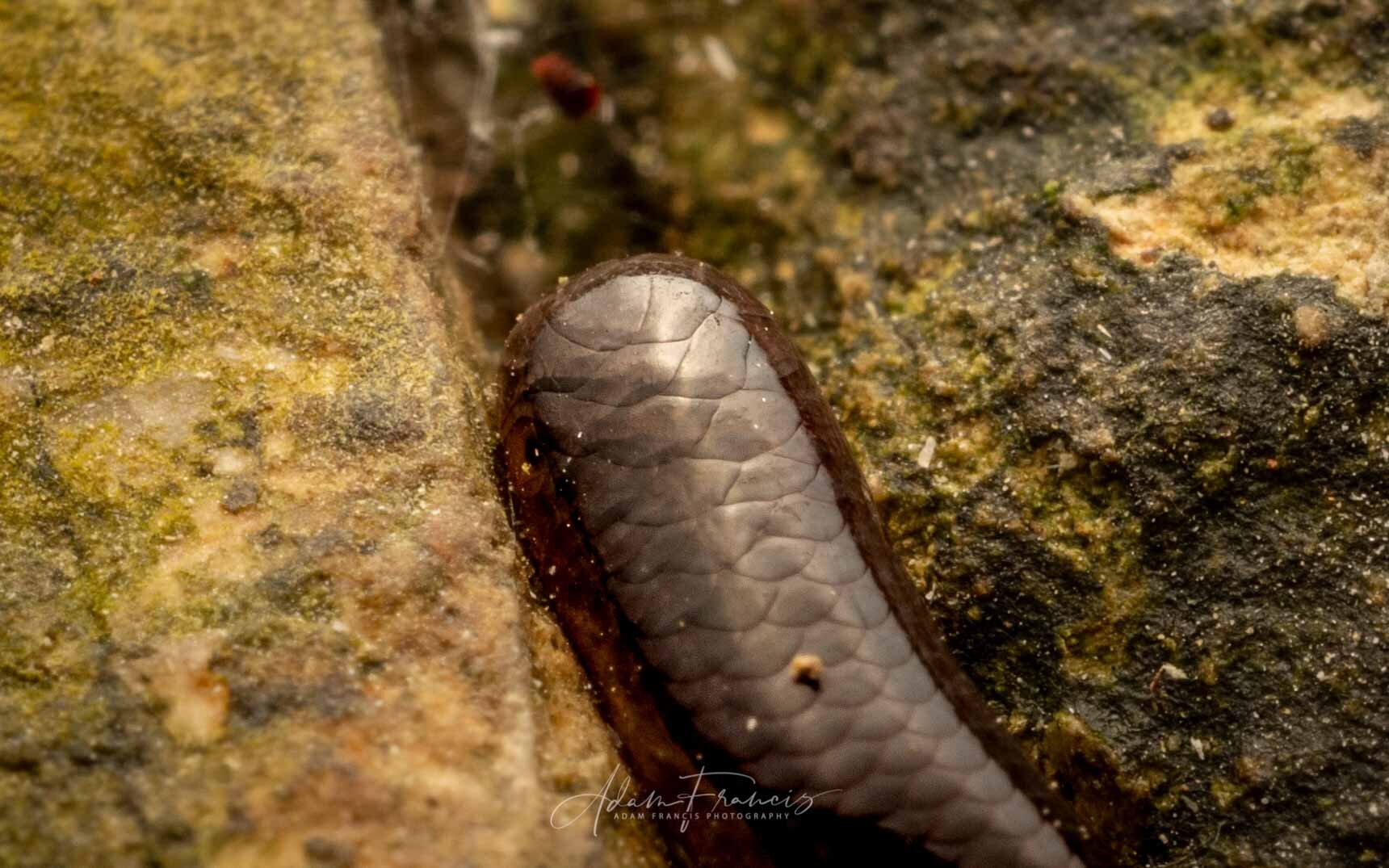
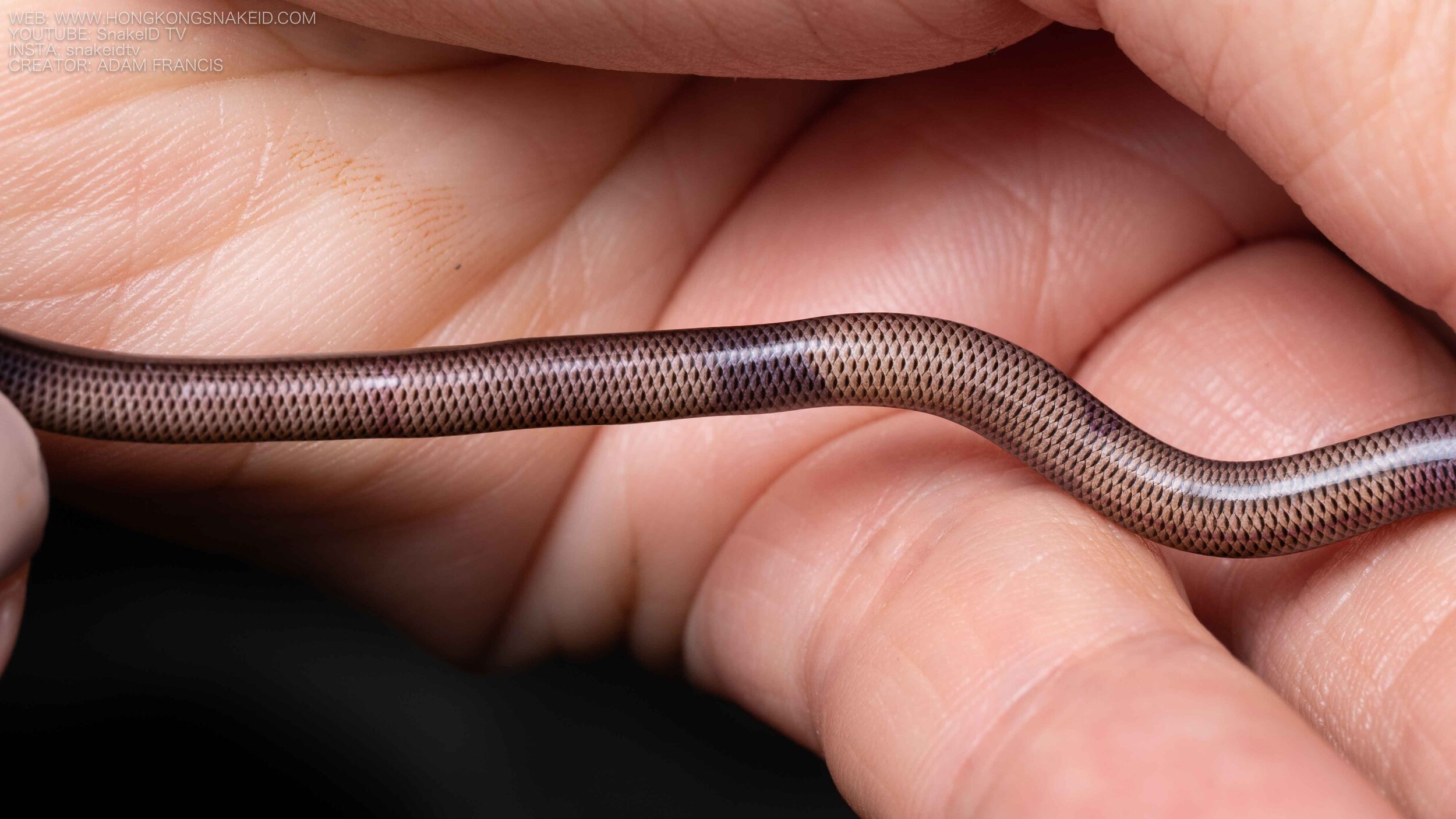
DESCRIPTION
Often sighted as Hong Kong's most abundant snake species, the Common Blind Snake looks like a dark earth worm reaching a maximum size of 15-20 cm. Juveniles of 3-5 cm and no more than 1-2 mm in diameter are often found as well. There is no separation between head, neck, body and tail and the remnant eyes are virtually impossible to discern unless viewed extremely closely. If you see what looks like a dark earth worm on a trail stop and take a closer look, you may have found a Common Blind Snake.
BEHAVIOR
Common Blind Snakes are prone to squirm vigorously when handled and adults are capable of secreting a smelly musk. Mature specimens also have a spike on their tail that they will use to poke attackers, though its small size renders it harmless to humans. All Common Blind Snakes are inherently female and do not require sex for reproduction. They can be found during the day and at night but are mostly nocturnal.
HABITAT
Completely terrestrial, the Common Blind Snake spends all its time on the forest floor, in leaf litter, under logs, burrowing or by shallow bodies of water hunting tiny insect larva.
MISTAKEN IDENTITY
NO SNAKE SHOULD EVER BE HANDLED BY ANYONE BUT EXPERTS: Often mistaken for earth worms, many people in Hong Kong may very well have seen Common Blind Snakes and not noticed. There is no danger associated with misidentifying Common Blind Snakes and they make interesting subjects to observe and show to children.

